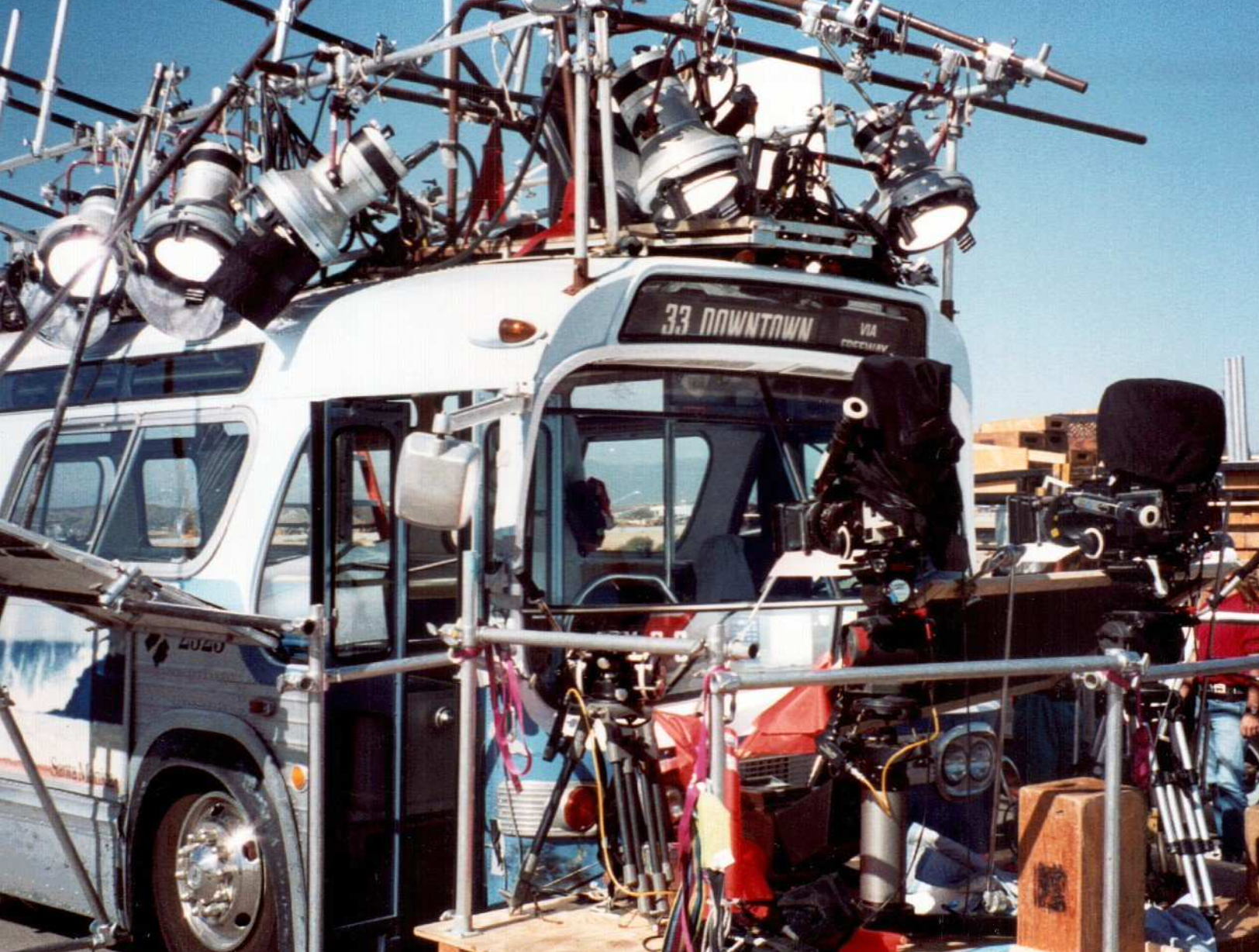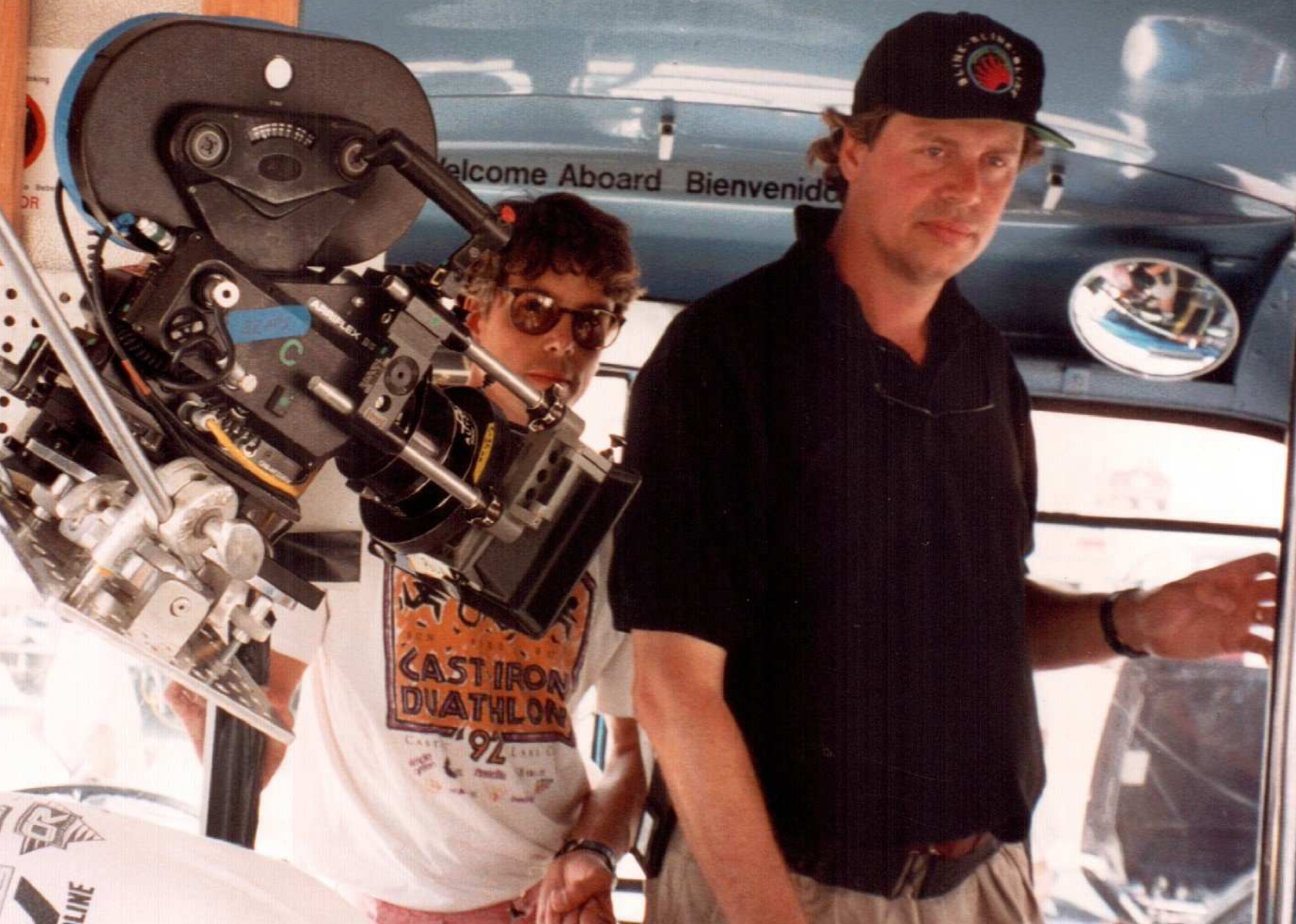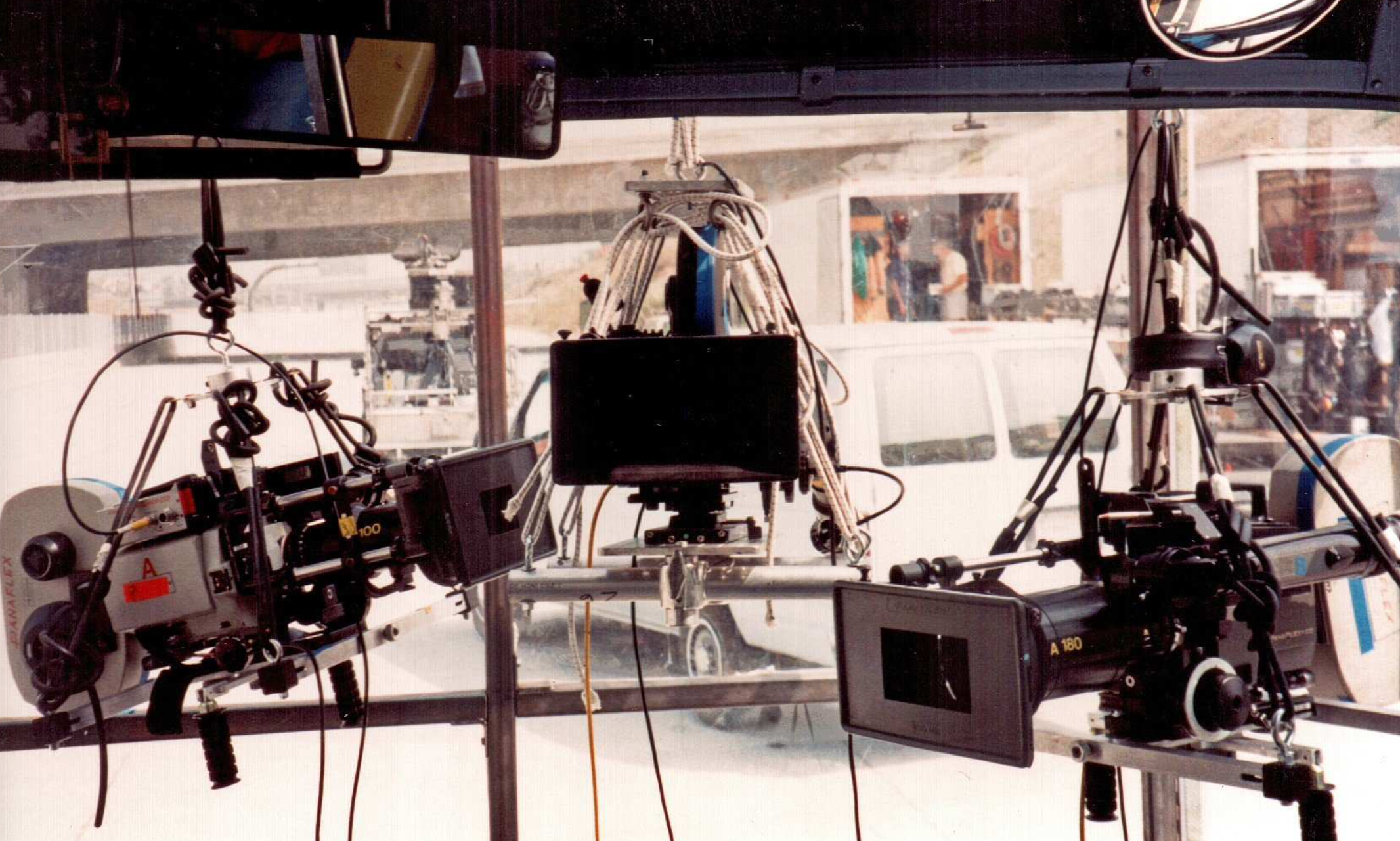Getting to Know Our Crew
With every single element of the film lined up and ready for production, we’re finally at that moment. But what, exactly, is the vision behind Speed? More importantly, how will that vision be lifted off the page and into tangible reality for the screen? What kind of a crew has been assembled to tackle this thrill ride?
Indeed, i’s time we started meeting the team of personnel behind the camera, an impressive roll call of artists and artisans who would bring their skills to bear on a film that would come to be seen as part of a dying breed of craftsmanship. Take it from first assistant camera Vern Nobles Jr.
“Everything we did on that movie, we could not do today,” Nobles says with confidence.

“On Speed, everybody on the crew was busting their ass for Jan,” says actor Alan Ruck. “Because he was a world-class cinematographer, but now he had made it to the top of the heap. He was the director. And so, every department was just busting their hump to make things as good as they could for Jan, because it was, like, ‘One of us had made it to the top.'”
Adds actress Natsuko Ohama: “They were adorable. I mean, masters of their work. When you make a film, the actors are really not the heart and soul of it. You see us, but it’s all those guys down on their knees playing with little cars and bus – like toys. And then they’re planning out shots, and then the stunt people, which were a major part of that film. I mean, they’re solving problems like scientists.”
And that’s what Speed would be. A giant problem to be solved. An elaborate jigsaw puzzle to be assembled. Just like Jack Traven working to maneuver the drama of the film and figure out a solution to his crisis, the team making Speed would be tasked with figuring out how to achieve Jan’s vision — at a budget.
“What I walked away from having done everything from $100 million films down to, whatever, $10 million films, to me it was, with the money we were given, I think it was probably spent the most wisely,” says stunt coordinator Gary Hymes. “Every cent, more or less, was put on the screen, where you can’t say that in other films. There was so little waste on Speed.”

We meet key figures like first assistant director David Sardi, Jan’s general in the field communicating the complexity of the day-to-day to cast and crew. Today, Sardi — like Nobles — marvels at the production’s workflow.
“We would never, ever make that movie that way now,” Sardi says. “It was kind of, like, the end of an era of really in-camera, practical, full-on reality filming. This was his first directing project out of the box, and he had a lot of people that he trusted told him, ‘You’re nuts to do this movie. This movie is almost impossible to pull off.’ And he didn’t listen to any of them. For me, it was just balls-out, seat-of-the-pants, go-for-it filmmaking that, from the AD’s perspective, was a hair-raising experience.”
Vital collaborators like special effects coordinator John Frazier join the conversation to detail the nuts and bolts of achieving what you see in the film’s many gripping action sequences.
“My first read on the script is not – I don’t read the words,” Frazier says. “I just look for things. Like a movie like Twister – like, OK, wind, rain, this, you know? And with Speed, it’s just, like, every page, you’d earmark the page because there was something on there for you. You’d turn the page and then it says, ‘The bus does this,’ and it was, like, ‘Boy, this is going to be a ride.'”
And of course it would all be in service of an overall vision aiming to capture an authenticity that was unusual then, and downright rare today.

“There’s only one thing I wanted to see. I wanted to make it look real, and rough,” director Jan de Bont says. “I did not want anything that slows it down. I wanted the cameras mostly handheld, or if the cameras are too heavy, like on the bus, we have those little rigs that were hanging on rubber cords that could carry most of the weight, but still has a feeling like it’s – I don’t like shaky. It’s not about shaky. It’s just a presence.”
And that’s really just a taste. Consider this episode the beginning of an odyssey through every phase of principle photography as we go deep inside the making of a soon-to-be movie megahit.
All of that and more on this week’s episode of 50 MPH!
*Photos courtesy of Alexander Witt
